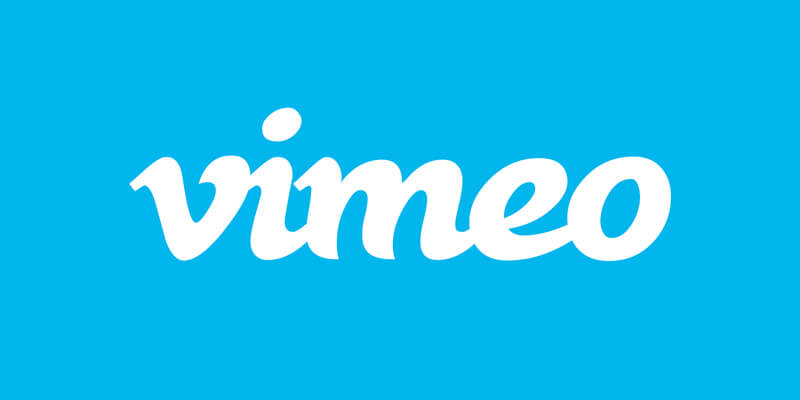Say you’ve just finished a short film or put together an edit from your recent vacation. It’s only natural that you’ll upload the video to social media platforms like YouTube, Vimeo, or Facebook for exposure. In a perfect world, you just upload one file everywhere, and that’s that. But as we all know, each platform brings its own set of encoding specifications that affect upload and playback. Keeping up with the ideal video specifications for each platform can be daunting—especially because these social media video.
That’s why MASV has compiled this continually updated, centralized repository of recommended social media video specs for the best playback possible.
Note: We’ll only focus on social media video specs for filmmakers. That means no video advertising specifications.
Need to Send Large Files?
Create a free MASV account to get started
Where should I upload my video?
It’s important to strategize when posting your new short film. While taking the “shotgun approach”—uploading to every video hosting site available—may seem clever at first, the folks at Film Shortage note that initially posting to multiple platforms can dilute your impact by spreading out the number of plays and likes. It’s better to launch your film on one platform and then release it to others once you’ve gained some momentum.
But which online video platform is best?
While Film Shortage (which exclusively posts its content to Vimeo) insists there is no right or wrong answer, each platform has unique differences. Google-owned YouTube has better searchability and a higher viewership, but it’s mostly casual viewers looking for viral clips. While Vimeo has a smaller audience, it’s also known as a “home base” for filmmakers and emphasizes video presentation, audio quality, and customization options.
Whichever platform makes the most sense for you ultimately depends on your content and goals. Below is a breakdown of social media video specs for YouTube, Vimeo, Dailymotion, Facebook, and Instagram.

YouTube Video Specs
While YouTube re-encodes every uploaded video to ensure high playback quality, it also encourages all users to upload videos as close to their “original, high-quality source format” as possible. The maximum video file size on YouTube is up to 128GB (or 12 hours in length)—otherwise, there are no upload limits.
Here are the preferred YouTube video specifications for optimal playback quality:
Video format: MPEG-2 or MPEG-4. Although it’s possible to submit videos to YouTube in WMV, AVI, MOV, and FLV formats, it’s not recommended.
MPEG-2 (aka H.262)
- Audio codec: MPEG Layer II or Dolby AC-3
- Audio bit rate: 128 kbps or better
MPEG-4
- Video codec: H.264 (AVC)
- Audio codec: AAC
- Audio bit rate: 128 kbps or better
Frame rate: 24, 25, or 30 fps (YouTube discourages the use of resampling techniques to augment frame rates, instead recommending videos stay in their native frame rates)
Bit rate: Recommended upload bit rates are as follows:
| Resolution | Rec. bit rate (Mbps) |
| 360p | 1-1.5 |
| 480p | 2.5-4 |
| 720p | 5-7.5 |
| 1080p | 8-12 |
| 2K | 16-24 |
| 4K | 35-68 |
Aspect ratio: YouTube’s standard aspect ratio is 16:9, but the YouTube player automatically frames videos based on dimensions (videos with a 4:3 aspect ratio are pillarboxed when played in a 16:9 player (aka “Theatre Mode”), and 16:9 videos get letterboxed when played in the standard 4:3 player).
Additional YouTube aspect ratio guidelines are below:
| Native aspect ratio | Total frame size | Upload specs |
| 1.77:1 | 1.77:1 aspect ratio | 16:9 matting, square pixels, no border |
| 1.77:1 | Other aspect ratio | 16:9 matting, square pixels, single-color border with no variations over time |
| 1.33:1 | 1.33:1 aspect ratio | 4:3 matting, square pixels, no border |
| 1.33:1 | Other aspect ratio | 4:3 matting, square pixels, single-color border with no variations over time |
YouTube advises that theatrical releases with both a 16:9 version and a “pan and scan” version should have both versions uploaded separately.
Resolution: YouTube recommends users upload videos with the highest resolution possible. It can support resolutions up to 8K. Videos for sale or rental must have a resolution of at least 1920×1080 with a 16:9 aspect ratio, while other content should be a minimum of 1280×720 (at a 16:9 aspect ratio) or 640×480 (4:3 aspect ratio). Other recommended resolutions at a 16:9 aspect ratio are 1920×1080, 2560×1440, and 3840×2160.
Bit rate: YouTube doesn’t recommend a minimum bit rate, but advises that bit rates of 50 or 80Mbps are most common for commercial videos.
Users can also upload 360-degree videos on YouTube by following the recommended specifications above.
Read More: 360 Video: Understanding Immersive Video
Need to Send Large Files?
Create a free MASV account to get started

Vimeo Video Specs
Vimeo is unlike YouTube in another way—it doesn’t sell advertising. Instead, it relies on subscription revenue from a devoted user community, which partly accounts for its more quality-devoted membership (although if you’re looking to release your short film into the wild, it’s probably unwise to clutter it with ads, anyway). Users can sell or rent their work with a Vimeo Pro membership.
Free Vimeo users are allowed up to 500MB of uploads per week (with a storage limit of five GB). Paid Vimeo Plus members have no storage limit and can upload five GB per week, and Pro members can upload 20 GB per week.
Here are the preferred Vimeo video specifications for optimal playback quality:
Video format: Vimeo accepts various formats, including MP4, MOV, WMV, AVI, and FLV. It doesn’t indicate that one format is preferred over others.
Codecs: Vimeo accepts most major codecs, but recommends H.264, Apple ProRes 422 (HQ), or H.265 (HEVC).
Frame rate: Vimeo recommends maintaining your video’s native frame rate, along with keeping it constant (as opposed to a variable frame rate). Should you exceed 60 fps, the site will automatically reduce your frame rate. The most commonly used frame rates on Vimeo are 23.98, 24, 25, 29.97, 30, 50, 59.94, and 60 fps.
Bit rate: A variable bit rate is recommended, with the range entirely depending on source file resolution:
| Resolution | Rec. bit rate (Mbps) |
| SD | 2-5 |
| 720p | 5-10 |
| 1080p | 10-20 |
| 2K | 20-30 |
| 4K | 30-60 |
| 8K | 50-80 |
Resolution: Vimeo doesn’t recommend a specific resolution, but says the most common are 640×480, 640×360, 1280×720, 1920×1080, 2560×1440, 3840×2160, 4096×2160, and 8192×4320. Both 4K monoscopic and stereoscopic 360 video is recommended at a resolution of 4096×2098.
Aspect ratio: Vimeo recommends compressing videos with a pixel aspect ratio of 1:1 (square pixels), supporting video aspect ratios of 4:3, 16:9, and 17:9 (4K and 8K UHD). 360-degree videos should have an aspect ratio of 2:1.
Color: Uploading files containing color space information is recommended.
Color Primaries and Matrix Coefficients: All color primaries and matrices are supported, but BT.2020 (Rec. 2020) or BT.709 (Rec. 709) are recommended.
Color Transfer Characteristics: HDR videos must use the PQ (SMPTE 2084) or HLG transfer function. Use of the PQ (SMPTE 2084) transfer function requires the inclusion of Mastering Display Color Volume (SMPTE 2086) and Content Light Level Information metadata (CEA 861.3).
Bit Depth: Various bit depths are supported, but ten or greater is recommended and is required to be considered HDR video.
Scan Type: Progressive. Vimeo converts all videos to progressive for playback and recommends deinterlacing videos before uploading.

Dailymotion Video Specs
Another solid resource for filmmakers, Dailymotion is the second-largest video upload platform in terms of audience (although a very distant second to YouTube’s billion-plus daily users). Like YouTube, Dailymotion also serves advertising to its viewers, but filmmakers must sign up to become a partner to monetize video.
Regular users can upload up to 10 videos per day (or up to two hours of content, whichever comes first). Each file can be up to 60 minutes. Dailymotion Partner accounts have access to advanced features, such as unlimited hours of content uploads per day.
Here are Dailymotion’s recommended video specifications for optimal playback quality:
Video format: Dailymotion recommends uploading MOV, MPEG4, MP4, AVI, WMV, MKV, or FLV files.
Codecs: H.264 (AVC) recommended. Also accepts H.265 (HEVC), DivX, WMV9, or MPEG-2.
Audio Codec: AAC recommended, but MP3, WMA9, and MPEG Layer 2 can also be used.
Frame rate: There is no recommended frame rate. 24, 25, 30, 50, and 60fps are supported.
Bit rate: The following bit rates are recommended, depending on resolution:
| Resolution | Rec. bit rate (Mbps) |
| SD (480p) | 2 |
| HD (1080p) | 6-8 |
| 4K | 20 |
Resolution: Dailymotion can play videos with resolutions of up to 4K (3840×2160)
Aspect ratio: 16:9 recommended. It can also accommodate 4:3, but these videos will be pillarboxed.
Scan Type: Progressive or interlaced.
Need to Send Large Files?
Create a free MASV account to get started

Facebook Video Specs
The video hosting sites I mentioned above are better suited for filmmakers uploading their work. Facebook is trying to become a filmmaking platform. However, major negative differences between Facebook and Instagram and traditional video upload sites include fewer customization options and less powerful resolutions.
Facebook supports video uploads of up to 10GB, or 240 minutes long.
Video format: Facebook supports a wide range of video files but recommends the MP4 format. Check this complete list of supported video files.
Resolution: 1080p or less. Recommended dimensions are 1280×720.
Video codec: H.264 (AVC)
Audio codec: Stereo AAC recommended.
Aspect ratio: 16:9 (landscape) or 9:16 (portrait). Mobile is rendered to a 2:3 aspect ratio
Frame rate: 30 fps recommended.
Facebook 360 video
Facebook users can also upload a 360-degree video of up to 30 minutes in duration. The recommended specs are:
File format: MP4 or MOV
Resolution: Monoscopic: Up to 5120 x 2560
Stereoscopic: Up to 5120 x 5120
Video codec: H.264 (AVC)
Audio codec: Stereo AAC
Aspect ratio: Monoscopic: 2:1
Stereoscopic (Top-Bottom): 1:1 Total
Frame rate: 30 fps is recommended

Instagram Video Specs
Instagram users can upload up to a 60-minute, 3.6GB video (if uploading from a computer – if uploading from a mobile, the maximum is 15 minutes or 650MB).
Video format: Must be in MP4 format
Resolution: Minimum of 720p recommended, maximum 1080p
Aspect ratio: 16:9 (landscape) or 9:16 (portrait)
Frame rate: Minimum of 30fps recommended
*We will continue to update this list as more platforms, and thus, more social media video specs make their way to the mainstream.
Navigating social media video specs and uploading is the easy part. Getting large videos and related raw files from set, to the editing suite, to post-production and through quality assurance is often much more of a challenge. And that’s where MASV comes in.
MASV’s fast, large file transfer service is used by video professionals and filmmakers worldwide for ultra-reliable, always-on-time video transfer anywhere in the world with an internet connection. There’s no plugins or software to install, it’s completely pay-as-you-go (at $0.25/GB), and there are no limits on file transfer sizes or speeds.
Sign up today and get your next video where it needs to go faster and with zero stress (oh, and you can also send up to 20GB worth of data for free).
Need to Send Large Files?
Create a free MASV account to get started